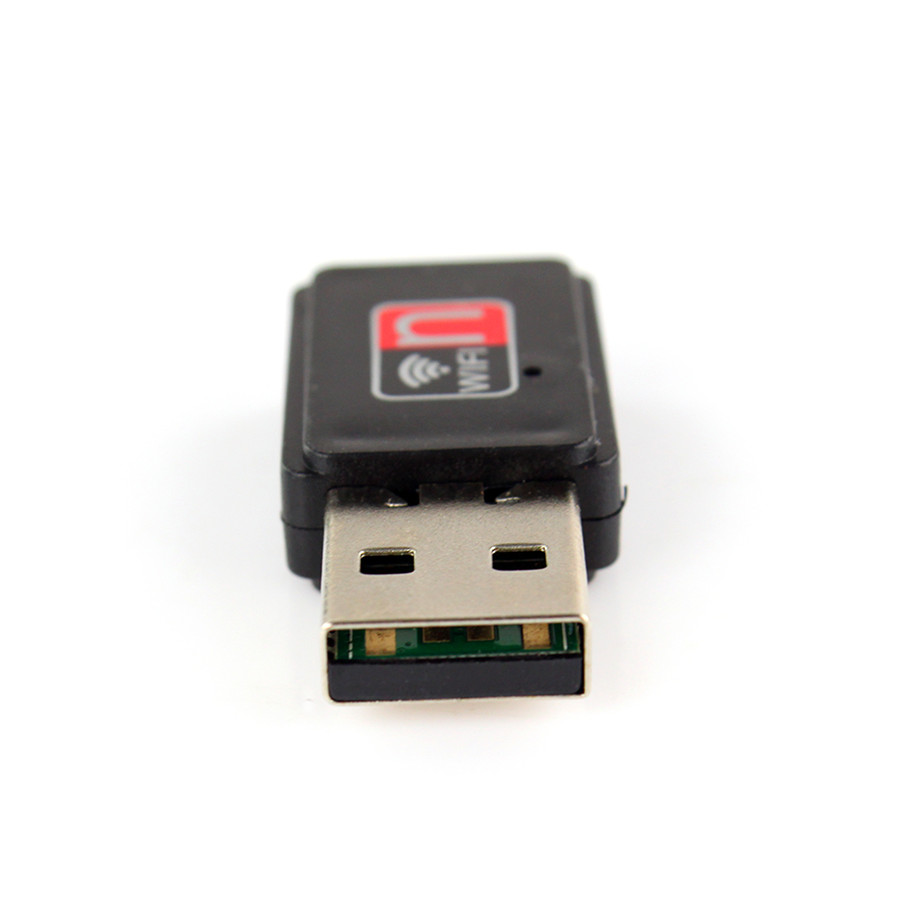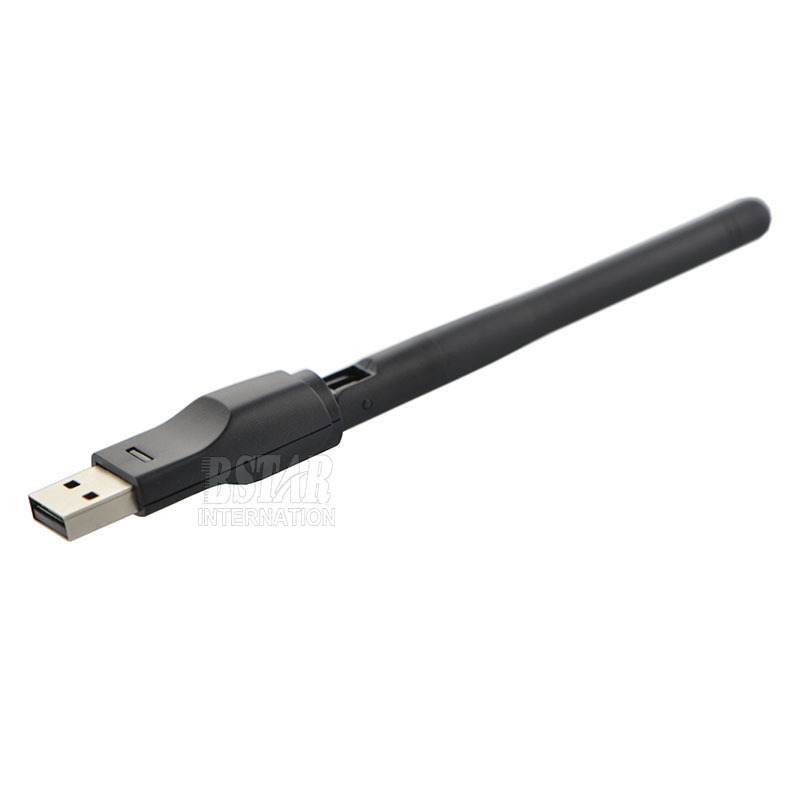Introduction
All About Wireless
How To Connect At Home
How To Connect On The Go
How to Troubleshoot Wireless Issues
The Future of Wireless
Home and business owners looking to buy networking gear face an array of choices. Many products conform to the 802.11a, 802.11b/g/n, and/or 802.11ac wireless standards collectively known as Wi-Fi technologies. Bluetooth and various other wireless (but not Wi-Fi) technologies also permeate the market, each designed for specific networking applications.
For quick reference, 801.11aj is the most recently approved standard. The protocol was approved in May 2018. Just because a standard is approved, however, does not mean it is available to you or that it is the standard you need for your particular situation. Standards are always being updated, much like the way software is updated in a smartphone or on your computer.
- For automatic identification and 802.11b/g/n pci wireless network adapter driver, we strongly recommend to download and install the Driver Update Tool – it will help you to get the correct latest drivers for all of your devices and avoid conflicts and improper work of your system.
- Realtek RTL8723BE 802.11 b/g/n Wi-Fi Adapter Driver on Windows 10 Hi everyone! I'm Joseph, And I’m here today to report an issue regarding my WiFi Adapter mentioned in the title above, the issue is basically the lack of WiFi hotspot capability, let me take you back when i first had the issue.
This page contains information about installing the latest ALFA 802.11b/g/n Wireless USB Adapter driver downloads using the ALFA Driver Update Tool. ALFA 802.11b/g/n Wireless USB Adapter drivers are tiny programs that enable your Wireless USB Adapter hardware to communicate with your operating system software.
What is 802.11?
In 1997, the Institute of Electrical and Electronics Engineers created the first WLAN standard. They called it 802.11 after the name of the group formed to oversee its development. Unfortunately, 802.11 only supported a maximum network bandwidth of 2 Mbps — too slow for most applications. For this reason, ordinary 802.11 wireless products are no longer manufactured. However, an entire family has sprung up from this initial standard.
The best way to look at these standards is to consider 802.11 as the foundation, and all other iterations as building blocks upon that foundation that focus on improving both small and large aspects of the technology. Some building blocks are minor touch-ups while others are quite large.
The largest changes to wireless standards come when the standards are 'rolled up' to include most or all small updates. So, for example, the most recent rollup occurred in December 2016 with 802.11-2016. Since then, however, minor updates are still occurring and, eventually, another large roll-up will encompass them.
Dell Wifi Driver Download Windows 7 32-bit
Below is a brief look at the most recently approved iterations, outlined from newest to oldest. Other iterations — 802.11ax, 802.11ay, and 802.11az — are still in the approval process.
802.11aj
Known as the China Millimeter Wave, this standard applies in China and is basically a rebranding of 802.11ad for use in certain areas of the world. The goal is to maintain backward compatibility with 802.11ad.
802.11ah
Approved in May 2017, this standard targets lower energy consumption and creates extended-range Wi-Fi networks that can go beyond the reach of a typical 2.4 GHz or 5 GHz networks. It is expected to compete with Bluetooth given its lower power needs.
802.11ad
Approved in December 2012, this standard is freakishly fast. However, the client device must be located within 11 feet of the access point.
802.11ac
The generation of Wi-Fi that first signaled popular use, 802.11ac uses dual-band wireless technology, supporting simultaneous connections on both the 2.4 GHz and 5 GHz Wi-Fi bands. 802.11ac offers backward compatibility to 802.11b/g/n and bandwidth rated up to 1300 Mbps on the 5 GHz band plus up to 450 Mbps on 2.4 GHz. Most home wireless routers are compliant with this standard.
- Pros of 802.11ac: Fastest maximum speed and best signal range; on par with standard wired connections
- Cons of 802.11ac: Most expensive to implement; performance improvements only noticeable in high-bandwidth applications
802.11ac is also referred to as Wi-Fi 5.
802.11n
802.11n (also sometimes known as Wireless N) was designed to improve on 802.11g in the amount of bandwidth it supports, by using several wireless signals and antennas (called MIMO technology) instead of one. Industry standards groups ratified 802.11n in 2009 with specifications providing for up to 300 Mbps of network bandwidth. 802.11n also offers somewhat better range over earlier Wi-Fi standards due to its increased signal intensity, and it is backward-compatible with 802.11b/g gear.
- Pros of 802.11n: Significant bandwidth improvement from previous standards; wide support across devices and network gear
- Cons of 802.11n: More expensive to implement than 802.11g; use of multiple signals may interfere with nearby 802.11b/g based networks
802.11n is also referred to as Wi-Fi 4.
802.11g
In 2002 and 2003, WLAN products supporting a newer standard called 802.11g emerged on the market. 802.11g attempts to combine the best of both 802.11a and 802.11b. 802.11g supports bandwidth up to 54 Mbps, and it uses the 2.4 GHz frequency for greater range. 802.11g is backward compatible with 802.11b, meaning that 802.11g access points will work with 802.11b wireless network adapters and vice versa.
- Pros of 802.11g: Supported by essentially all wireless devices and network equipment in use today; least expensive option
- Cons of 802.11g: Entire network slows to match any 802.11b devices on the network; slowest/oldest standard still in use
802.11g is also referred to as Wi-Fi 3.
802.11a


While 802.11b was in development, IEEE created a second extension to the original 802.11 standard called 802.11a. Because 802.11b gained in popularity much faster than did 802.11a, some folks believe that 802.11a was created after 802.11b. In fact, 802.11a was created at the same time. Due to its higher cost, 802.11a is usually found on business networks whereas 802.11b better serves the home market.
802.11a supports bandwidth up to 54 Mbps and signals in a regulated frequency spectrum around 5 GHz. This higher frequency compared to 802.11b shortens the range of 802.11a networks. The higher frequency also means 802.11a signals have more difficulty penetrating walls and other obstructions.
Because 802.11a and 802.11b use different frequencies, the two technologies are incompatible with each other. Some vendors offer hybrid 802.11a/b network gear, but these products merely implement the two standards side by side (each connected devices must use one or the other).
802.11a is also referred to as Wi-Fi 2.
802.11b
IEEE expanded on the original 802.11 standard in July 1999, creating the 802.11b specification. 802.11b supports a theoretical speed up to 11 Mbps. A more realistic bandwidth of 5.9 Mbps (TCP) and 7.1 Mbps (UDP) should be expected.
802.11b uses the same unregulated radio signaling frequency (2.4 GHz) as the original 802.11 standard. Vendors often prefer using these frequencies to lower their production costs. Being unregulated, 802.11b gear can incur interference from microwave ovens, cordless phones, and other appliances using the same 2.4 GHz range. However, by installing 802.11b gear a reasonable distance from other appliances, interference can easily be avoided.
802.11b is also referred to as Wi-Fi 1.

Wifi Driver Download Compaq
What About Bluetooth and the Rest?
Aside from these five general-purpose Wi-Fi standards, several other related wireless network technologies offer slightly different value propositions.
- IEEE 802.11 working group standards like 802.11h and 802.11j are extensions or offshoots of Wi-Fi technology that each serve a very specific purpose.
- Bluetooth is an alternative wireless network technology that followed a different development path than the 802.11 family. Bluetooth supports a very short range (approximately 10 meters) and relatively low bandwidth (1-3 Mbps in practice) designed for low-power network devices like handhelds. The low manufacturing cost of Bluetooth hardware also appeals to industry vendors.
- WiMax also was developed separately from Wi-Fi. WiMax is designed for long-range networking (spanning miles or kilometers) as opposed to local area wireless networking.
The following IEEE 802.11 standards exist or are in development to support the creation of technologies for wireless local area networking:
Acer Wifi Driver Download
- 802.11a: 54 Mbps standard, 5 GHz signaling (ratified 1999)
- 802.11ac: 3.46Gbps standard, supports 2.4 and 5GHz frequencies through 802.11n
- 802.11ad: 6.7 Gbps standard, 60 GHz signaling (2012)
- 802.11ah: Creates extended-range Wi-Fi networks that go beyond the reach of a typical 2.4 GHz or 5 GHz networks
- 802.11aj: Approved in 2017; primarily for use in China
- 802.11ax: Approval expected 2018
- 802.11ay: Approval expected 2019
- 802.11az: Approval expected 2019
- 802.11b: 11 Mbps standard, 2.4 GHz signaling (1999)
- 802.11c: Operation of bridge connections (moved to 802.1D)
- 802.11d: Worldwide compliance with regulations for use of wireless signal spectrum (2001)
- 802.11e: Quality of Service support (2005) to improve the delivery of delay-sensitive applications, such as Voice Wireless LAN and streaming multimedia
- 802.11F: Inter-Access Point Protocol recommendation for communication between access points to support roaming clients (2003)
- 802.11g: 54 Mbps standard, 2.4 GHz signaling (2003)
- 802.11h: Enhanced version of 802.11a to support European regulatory requirements (2003)
- 802.11i: Security improvements for the 802.11 family (2004)
- 802.11j: Enhancements to 5 GHz signaling to support Japan regulatory requirements (2004)
- 802.11k: WLAN system management
- 802.11m: Maintenance of 802.11 family documentation
- 802.11n: 100+ Mbps standard improvements over 802.11g (2009)
- 802.11p: Wireless Access for the Vehicular Environment
- 802.11r: Fast roaming support using Basic Service Set transitions
- 802.11s: ESS mesh networking for access points
- 802.11T: Wireless Performance Prediction — recommendation for testing standards and metrics
- 802.11u: Internetworking with cellular and other forms of external networks
- 802.11v: Wireless network management and device configuration
- 802.11w: Protected Management Frames security enhancement
- 802.11y: Contention-Based Protocol for interference avoidance
Toshiba Wifi Driver Download Windows 7
The Official IEEE 802.11 Working Group Project Timelines page is published by IEEE to indicate the status of each of the networking standards under development.